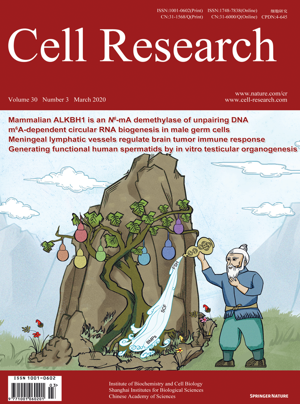
Advanced Search
Submit Manuscript
Advanced Search
Submit Manuscript
Volume 30, No 3, Mar 2020
ISSN: 1001-0602
EISSN: 1748-7838 2018
impact factor 17.848*
(Clarivate Analytics, 2019)
Volume 30 Issue 3, March 2020: 189-190
Virus against virus: a potential treatment for 2019-nCov (SARS-CoV-2) and other RNA viruses
Tuan M. Nguyen1, Yang Zhang1 and Pier Paolo Pandolfi 1,2
The novel coronavirus, 2019-nCov (named as SARS-CoV-2 by ICTV Coronaviridae Study Group on February 12, 2020), causes severe respiratory illness1 and has been spreading around the world rapidly.2 As of February 14, 2020, there are over 64,000 confirmed cases with 1,384 deaths. This raises an urgent need for an effective treatment of the deadly disease. However, current antiviral drugs have limited effects on 2019-nCov (SARS-CoV-2). Although Gilead’s NUC (nucleoside) inhibitor, which previously failed to treat Ebola, seemed to benefit a 2019-nCov (SARS-CoV-2) patient in Washington, USA, it remains unknown whether the drug will be effective against the virus in other patients, who may have been infected by different variants of the virus. Our analysis of 2019-nCov (SARS-CoV-2) RNA genome from 19 patients in China, USA and Australia reveals that these viruses have differences in sequence (Fig. 1a). These differences are mostly single nucleotide variations. Fig. 1b shows an example of single nucleotide variations that result in changes in amino acids 62 and 84 of ORF8 of 2019-nCov (SARS-CoV-2), a polypeptide implicated in driving coronavirus transition from bat to human.3 The evidence from patient samples suggests that 2019-nCov (SARS-CoV-2) is actively acquiring new mutations that may enable it to escape antiviral drugs. This raises a serious challenge to the development of conventional drugs and of vaccines. The same limitations apply to other deadly RNA viruses such as SARS or MERS.
https://doi.org/10.1038/s41422-020-0290-0